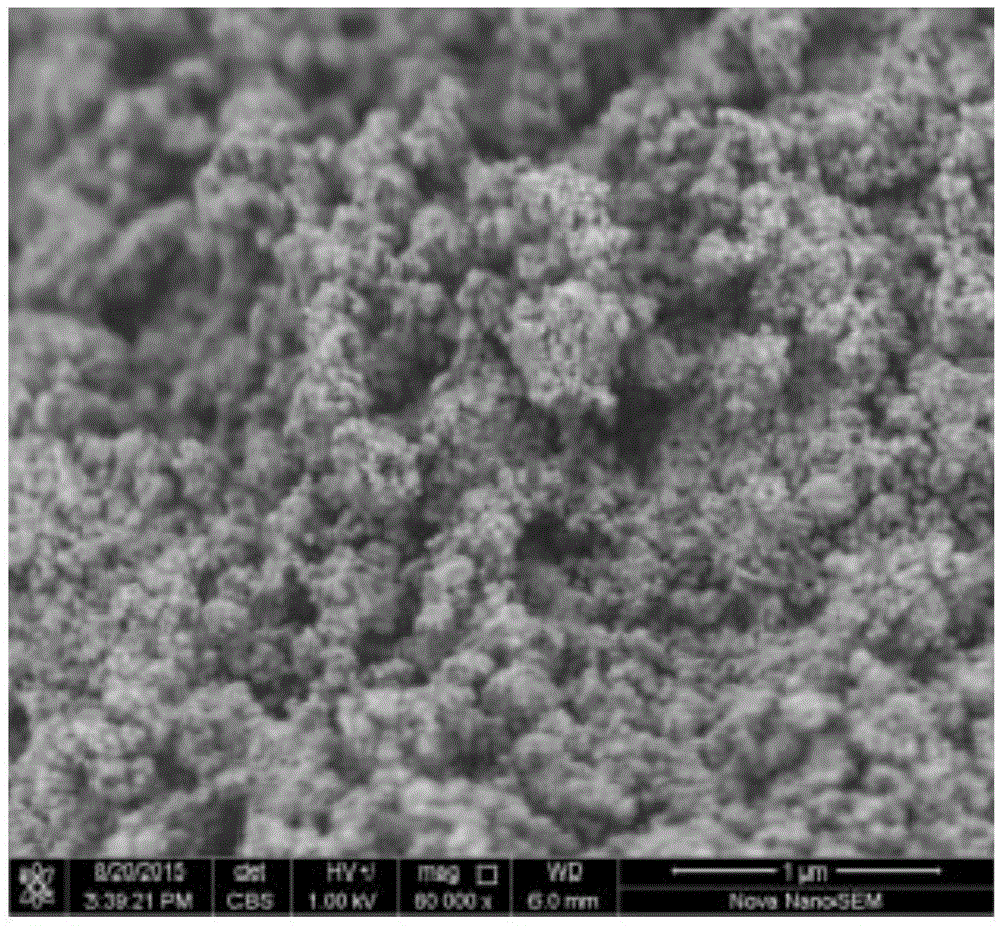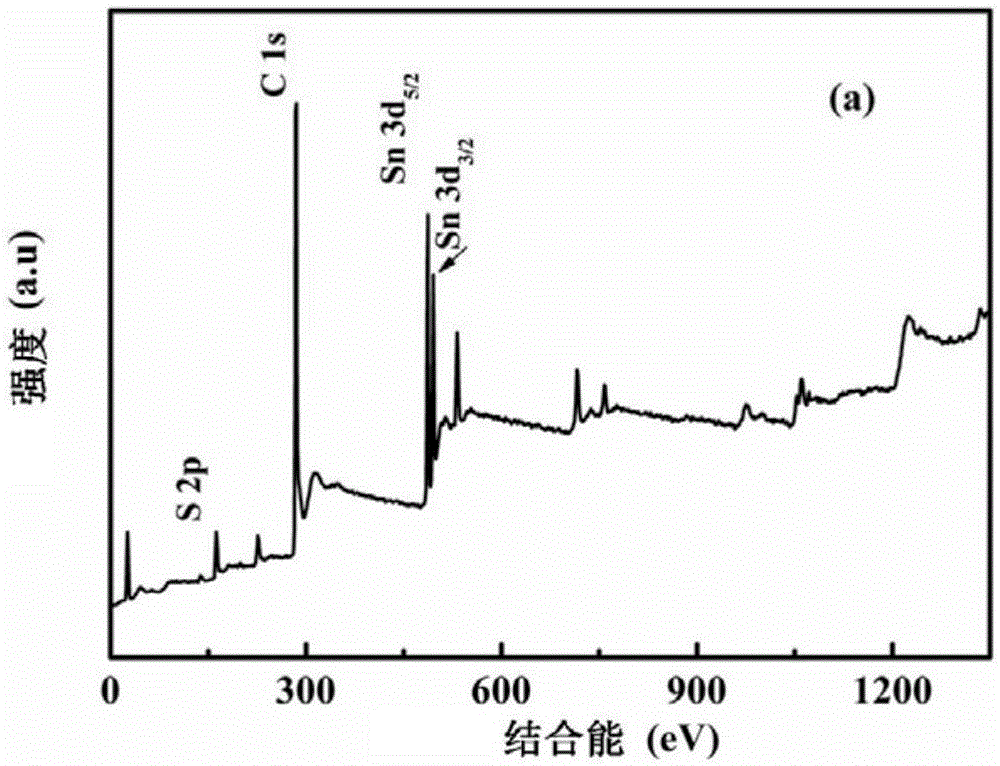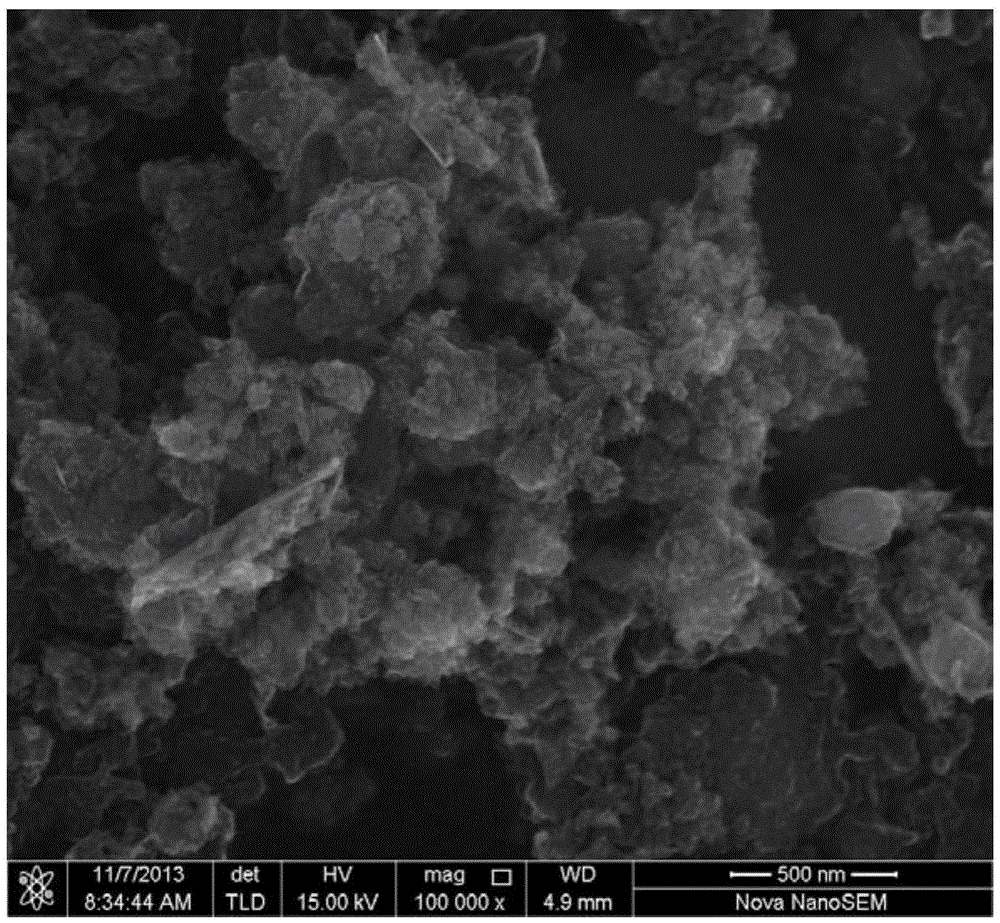SnS2-C negative electrode nanocomposite and preparation method and application therefor
A nano-composite and negative electrode material technology, applied in the fields of nanotechnology, nanotechnology, nanotechnology for materials and surface science, etc., can solve the problems of high production cost, low output, complicated preparation process, etc. The effect of specific surface area and simple preparation process
- Summary
- Abstract
- Description
- Claims
- Application Information
AI Technical Summary
Problems solved by technology
Method used
Image
Examples
Embodiment 1
[0045] This embodiment prepares a kind of SnS 2 -C nanocomposite anode material, of which SnS 2 The mass ratio to C is 2:1, and the specific steps are as follows:
[0046] (1) Weigh SnS 2 4g powder (purity 99% and particle size 40-60μm), and at the same time select 200g stainless steel metal grinding balls (ball-to-battery ratio: 50:1), put them into a 250ml stainless steel grinding tank, and fill with 1bar argon (Ar) for protection ; Put the ball mill jar on the ball mill for the first ball milling to obtain the SnS after ball milling 2 For powder, the ball milling speed is 400 rpm and the ball milling time is 40 hours.
[0047] (2) SnS after ball milling 2 An aqueous solution of glucose is added to the powder, in which glucose is 5g. At the same time, put 180 grams of stainless steel metal grinding balls (ball-to-material ratio: 20:1) into a 250ml stainless steel grinding jar; place the ball mill jar on the ball mill for the second ball milling to obtain the mixture, where the ba...
Embodiment 2
[0057] This embodiment prepares a kind of SnS 2 -C nanocomposite anode material, of which SnS 2 The mass ratio to C is 1:1, and the specific steps are as follows:
[0058] (1) Weigh SnS 2 4g powder (purity 99% and particle size 40-60μm), and 120g stainless steel metal grinding balls (ball-to-battery ratio: 30:1) are selected and placed in a 250ml stainless steel grinding tank, filled with 1bar argon (Ar) for protection; Place the ball milling jar on the ball mill for the first ball milling to obtain the SnS after ball milling 2 For powder, the ball milling speed is 500 rpm and the ball milling time is 40 hours.
[0059] (2) SnS after ball milling 2 Add glucose solution to the powder, where glucose is 10g. At the same time, put 280 grams of stainless steel metal grinding balls (the ball-to-material ratio is 20:1) into a 250ml stainless steel grinding jar; place the ball mill jar on the ball mill for the second ball milling to obtain the mixture, where the ball milling speed is 200 r...
Embodiment 3-4
[0065] In Examples 3 and 4, except for SnS 2 The mass ratio of powder to glucose is different from that in Example 2, and the other steps are the same as in Example 2. The SnS of Examples 3 and 4 2 The mass ratio of powder to glucose is shown in Table 1. The SnS of the composite material obtained 2 The mass ratio with C is also shown in Table 1. The composite material was tested for performance in the same manner as in Example 1, and the performance results are shown in Table 1.
[0066] Table 1 Related data table of Example 3-4
[0067]
PUM
| Property | Measurement | Unit |
|---|---|---|
| particle diameter | aaaaa | aaaaa |
| particle diameter | aaaaa | aaaaa |
| size | aaaaa | aaaaa |
Abstract
Description
Claims
Application Information
 Login to View More
Login to View More - R&D
- Intellectual Property
- Life Sciences
- Materials
- Tech Scout
- Unparalleled Data Quality
- Higher Quality Content
- 60% Fewer Hallucinations
Browse by: Latest US Patents, China's latest patents, Technical Efficacy Thesaurus, Application Domain, Technology Topic, Popular Technical Reports.
© 2025 PatSnap. All rights reserved.Legal|Privacy policy|Modern Slavery Act Transparency Statement|Sitemap|About US| Contact US: help@patsnap.com



